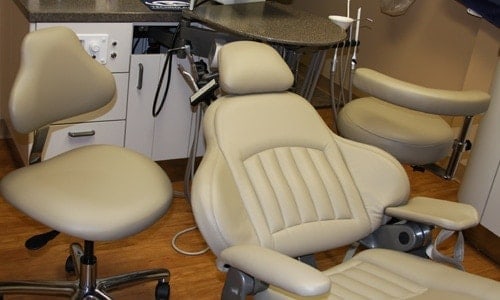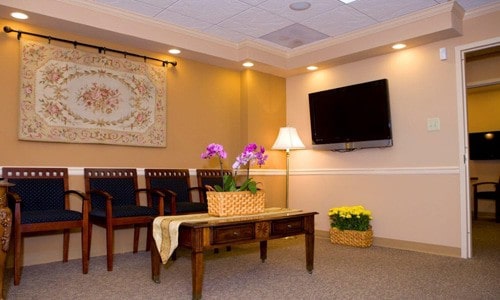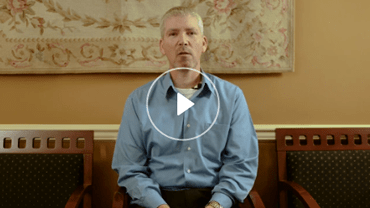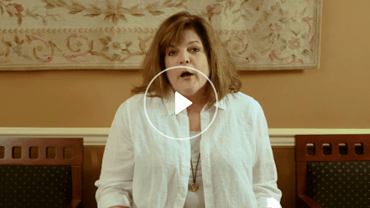An Interview with Dr. Briglia on Sedation Dentistry
Briglia Dental Group has been providing sedation dentistry services to patients for over thirteen years. They have extensive experience in oral and IV sedation dentistry.

At Briglia Dental Group, we receive many questions about our sedation practice, so we decided to interview Dr. Ron Briglia, owner of Briglia Dental Group, to tell you a little bit more about our sedation dentistry services
Who would benefit from sedation dentistry?
Dr. Ron Briglia: Those who benefit from sedation dentistry are any patients who avoid going to the dentist or for various reasons, such as:
Patients with a very bad gag reflex. Some people will avoid their need to get dental care because they gag so much. With sedation, the patients are very relaxed, and it knocks out the gag reflex.
Patients who have had traumatic dental experiences as children, and now are phobic as adults. Their phobia may last because they’ve had poor care or an uncaring dentist in the past, or they were traumatized to the point where they are phobic about even coming in. Sedation dentistry helps them get their work done.
Patients who have trouble getting numb or staying numb no matter how much local anesthesia they get would also benefit from sedation dentistry. The patient will have no problem with pain.
Patients who are on a time constraint. Patients with busy work schedules or who are busy with families and can’t take a lot of time off work for multiple dental appointments. These patients are benefited with a long sedation appointment or two and can get months or years worth of dentistry done in a short period of time.
Patients who hate the sounds and smells of dentistry.
How long does a sedation dental appointment last?
Dr. Briglia: An all-day dental appointment can be five to six hours, or less depending on the exact procedures that our patient may need. Some sedation appointments can be done in a few hours.
Do you see more adults or children in your sedation dentistry practice?
Dr. Briglia: We treat adult patient 18 years and older. I have advanced cardiac life support certification, ACLS, for adults. Young adults and children under 18 years of age are best treated by pediatric dentists with sedation training.
Can you go in for a cleaning and get the sedation treatment?
Dr. Briglia: It’s not common to be sedated for a dental cleaning. If the patient is too phobic for even a cleaning we usually do a full exam, and a cleaning can be done as part of that sedation appointment.
As an example, during a sedation visit to take care of cavities, fillings or a crown, the cleaning might be the first part of the appointment. It wouldn’t be cost effective to do sedation for a cleaning.
What are the different types of sedation dentistry?
Dr. Briglia: Yes. In dental marketing, sedation dentistry may appear very different in its meaning. For example, some doctors promote sedation dentistry when all they are using is nitrous oxide, or laughing gas.
Nitrous Oxide is inhalation sedation which relaxes a patient but it’s not like the oral or IV sedation that we provide in our office. Oral sedation is a more advanced form of sedation, where a sedation pill is placed underneath the tongue.
Is that dissolvable?
Dr. Briglia: Yes. It dissolves underneath the tongue. The reason that it is administered this way is because if it’s given by mouth, the pill has to go through the stomach and the liver before its effects are delivered. That route of action really reduces the effects of the sedation medication.
If it’s dissolved under the tongue, the amount of vascularity in the area allows the sedative to enter directly into the bloodstream, bypassing the stomach and liver. The only problem with oral sedation and practices that strictly promote sedation with a little blue pill is that you can only give one dose under the tongue. Its effectiveness is dependent on the patients’ weight, height etc…
The gold standard of sedation dentistry is IV sedation. The IV sedation we provide is the same type of sedation that’s used in the hospital and in short procedure units. Short procedure IV sedation, for example, is used for colonoscopies or short surgical procedures that don’t require general anesthesia in the operating room.
The great thing about IV sedation is that once the IV is started, the patient is placed on a normal saline drip. The sedation medicines can be given right through the IV, which is much safer. In addition, you are able to give multiple doses throughout a long period of time to keep the patient comfortable as opposed to one pill underneath the tongue. Also, by having IV access, you’re prepared for any necessary emergency medicines that may be needed. They can be used right through the IV.
The IV also hydrates the patient for a long appointment. When oral sedation is used, the patient cannot be drinking water for fear of them throwing up.
What are the medications used in sedation dentistry?
Dr. Briglia: The “little blue pill” is Halcion or Triazolam. It’s a Benzodiazepine that is absorbed through the blood vessels underneath the tongue and it gives a varying degree of relaxation sedation. In IV sedation we use a Benzodiazepine as well called Versed. A Benzodiazepine helps you relax, takes inhibitions away, and helps produce amnesia.
Another benzodiazepine is called Valium. However,Valium is not that kind to the veins, and it has a longer half life, meaning patients would have a longer recovery time after a sedation appointment. Since Valium has a 30-hour half-life, the patient would be sedated for a lot longer period of time and a shorter acting medication should be used. Versed is kinder to the veins, produces amnesia, and clears the body within a few hours.
The other medicine that’s used to control pain during IV sedation appointments is a synthetic narcotic called Fentanyl. Fentanyl is ten times stronger than morphine, and blocks pain in the central nervous system. Those are the two main medicines we use in our practice for IV sedation appointments.
One other medication in our IV sedation regimen is used to dry up the salivary glands. It’s called Glycopyrrolate, and it helps to reduce the salivary gland flow.
Toward the end of the appointment, an antiemetic called Zofran, or Ondansteron, can be used. This is a medication that helps reduce post op nausea and vomiting. It’s administered in either the IV or pill form. At times, we give a little bit of this antiemetic in the IV at the end of the appointment which lessens the risk of nausea or vomiting after the visit. Oxygen is also used throughout the entire appointment.
I know you mentioned that nausea was a side effect. Are there any other side effects to sedation dentistry?
Dr. Briglia: The other side effects are less severe; a patient might be a little groggy or sleepy after the appointment.
What are the risks involved in sedation dentistry?
Dr. Briglia: I would say there are risks in a lot of things in life. However, in our practice, we thoroughly screen our patients. We do a medical consult prior to the appointment with our patient’s primary doctor to review their medical history and any contraindications.
Generally, we deal with patients who are healthy or have well controlled medical issues. Not everybody is a candidate for in office sedation dentistry, however.
If a patient has too many medical issues, or he or she is severely compromised, then a hospital based sedation dental program is more suitable.
How should a patient should prepare for a sedation appointment?
Dr. Briglia: First, we prepare by making sure that the patient has had a medical exam in the last year. We do a consult with their medical doctor to review that our mutual patient has decided to proceed with their dental care with the aid of sedation dentistry.
Once the patient comes in, we review the process, the treatment, and the financial arrangements for the treatment in a series of steps.
We go over the medical conditions that they have, the medications they are on, and the medications that we are going to be using throughout the appointment. We do a consult with our patient’s doctor to see if there’s any contraindications to sedation treatment.
Once we get the OK, we review preparations with the patient. Our standard protocol includes that the patient will need a driver who can help them by bringing them to and from the appointment.

The day before the appointment, we recommend that the patient drinks a lot of fluids throughout the day. However, the patient is to have nothing to eat or drink after 11 o’clock that night. Our IV sedation appointments are usually scheduled at 8 o’clock in the morning. The only exception to not drinking anything before the visit is if there is a medication that they need to take. Taking the medication with a little bit of water is ok.
We recommend they have a good night’s sleep. If a patient is apprehensive, we can give them a sleeping aid to help them get to sleep the night before the appointment. When they come in, they want to have light, loose clothing on, with no sleeves. This is because we need to have access to the arm to use the monitoring device for the blood pressure cuff. Vital signs are closely monitored throughout the appointment and recorded every 5 minutes. We also have blankets and pillows, so that the patient will be warm.
We also have a post op checklist that we go over with their caregiver before the sedation appointment is started. That is the time where we fill out the consent forms for sedation, or if there’s going to be any dental implants, perio surgery or extractions. The consent forms are signed in the reception room right before they go back, and then the post op list is reviewed with the patient. It has the information on not operating any heavy machinery, no driving until the next day, etc…
Is there any pain involved in sedation dentistry?
Dr. Briglia: The patients are in absolutely no pain. Even after the sedation is visit started and the patient is comfortable, we still numb very well so the patient does not feel or remember anything.
What can someone expect after a sedation appointment?
Dr. Briglia: After the appointment is completed, we do post op care which involves sitting them up and giving them something to drink. We might even start a little oral pain medication as well.
Then as they’re relaxing, we open the line, and run the rest of the saline. We will also give a little bit of the antiemetic, which helps reduce the chance of post op nausea and vomiting. The patient will awake a little bit, and then we begin a post op regiment. We go through a protocol that lets us know if they’re able to be discharged. When they’re done with the appointment and ready to go, we sit them up until they can get their bearings.
When they go home, they’re probably going to be hungry. Right after the appointment, we recommend not eating a heavy meal but they can have a milkshake or something similar. They then should wait a bit, at least four to five hours to eat more of a heavier meal when they’re more recovered. The patient needs to drink plenty of fluids as soon as possible to re hydrate from being without liquids the night before the appointment.
The patient will also want to sleep a little bit, which is OK, but they should be monitored for a while before the caregiver leaves. In addition, the caregiver must always hold the patient’s arm when walking. The patient must not go up or down stairs unattended. They must stay on the ground floor until recovered. On our post-op checklist, we mention that when the patient gets home safely, he or she should call me on my cell phone to let me know. I personally check on all my sedation patients over the next few days via phone call.
In most cases, a non narcotic pain regimen will be given, consisting of acetaminophen (Tylenol), and ibuprofen (Advil). These two medications, when taken together, will be as effective as a light pain medication without any of the side effects associated with narcotics.
(If a patient has any questions about medications interacting with other medications that they are presently taking, they should call our office, their physician, and/or their pharmacist.)
How safe are sedation appointments?
Dr. Briglia: Sedation appointments, for a healthy patient, are very safe.
In our practice, we monitor the sedation meds and the patient’s response to the medication very closely, and we only give enough sedation meds to make the patient comfortable so they can have the work done. There’s no reason to over sedate a patient, we just need enough medication to keep our patients comfortable and safe.
In order to monitor our patients, we use the same type of monitoring systems and protocols that are used hospitals, and especially in the short procedure units.
One example of a safety protocol is using a monitoring device which takes vital readings at five-minute intervals. It monitors blood pressure, the blood oxygen content in the blood, heart rate, 3-lead EKG, heart rhythms and exhaled CO2.
There are safeguard alarms within the monitor so if the blood oxygen content is going down or the blood pressure is too high, the monitor will sound and we will take the appropriate actions. Safety during a sedation appointment is our first priority.
How long would your typical sedation appointment last for?
Dr. Briglia: The average sedation appointment is at least two to three hours long, depending on the need and desire of the patient to get their work done. If a lot of dental work is planned, the visit could last up to five hours or more.
What about pregnant women? Is it safe for them to have a sedation appointment?
Dr. Briglia: For pregnant women, we hold off any needed dentistry, especially in the first trimester, unless there’s an emergency. In an emergency situation we refer the patient to a specialist. Sedation dentistry is generally not performed on pregnant women.
How much does sedation dentistry cost?
Dr. Briglia: The cost of sedation in an office setting like mine is a lot less than if it would be performed in the hospital. In our practice, our fees are moderate. The cost of care depends on the type of dentistry needed. Patients may use a third-party payment service like Care Credit. Third party payment plans like Care Credit routinely offer 12 month interest-free plans, as well as extended 24, 36 and 48 month options.
What could someone expect at Briglia Dental Group that might be different than any other sedation dentistry services?
Dr. Briglia: In my practice, my team has been providing oral and IV-sedation care for over 13 years, and family, cosmetic, and advanced general dentistry coming up on 31 years. We’ve cared for hundreds and hundreds of fearful and phobic patients with sedation care since 2003.
Our relationships with specialists who can provide care during a sedation appointment, sets our practice apart from the vast majorities of dental offices in our area. Years of combined successful dental experience between the professionals on our sedation team is another reason we feel we offer services not found in most other dental practices.
Our goal is not to sedate someone every time they come in. Our goal is to try to help them work through some of their dental issues so they don’t have to be sedated each time. We want to provide the sedation care they need, but also assess why they were avoiding dentistry in the past.
Most of our initial sedation patients get to the point where they don’t need sedation anymore. They realize with our pain-free numbing, nitrous oxide, and painless treatment, that they feel safe and no longer need sedation for care. That is the best reward for our team, to help a terrified, phobic patient get the care they need with sedation at first, but transition to regular visits after that.
We have weaned many patients off of sedation dentistry after just a few appointments. They realize that we do painless dentistry and realize that the fear in their mind was worse than the actual treatment.
When they come in, they know they are in a safe environment where our professional team is attuned to their phobias and know how to treat them in a professional and caring manner.
We have many, many happy patients who have posted positive reviews online at various review sites for us and we encourage potential patients to check us out.
In summation, many other dental practices seek quantity, and don’t care to engage in the personal connections that patients need to feel secure. My office offers the highest level of care possible while remaining responsive to patients as individuals.
For more information on Briglia Dental Group and our dental services, feel free to contact us! Give us a call at (610) 615 0160 or feel free to contact us through our online form!

Share this Article
Back to Blog Page






